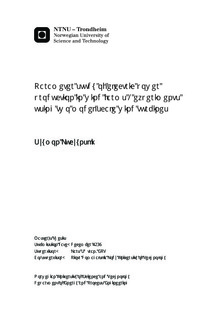Parameter study of electric power production in wind farms - experiments using two model scale wind turbines
Master thesis
Permanent lenke
http://hdl.handle.net/11250/2350014Utgivelsesdato
2014Metadata
Vis full innførselSamlinger
Sammendrag
During the last years the growing amount of a wind turbines was observed, but limited area requires to build them closer to each other or group them in clusters called wind farms. Interactions between the turbines have primary influence on decrease of total power generated in the wind parks. To design a wind park, the sophisticated software, able to model and simulate aerodynamic processes is required. Such models however need experimental validation or at least some reference test cases, what is currently missing [26,29,30]. Current work is therefore an attempt to build part of such reference data for upgrading or evaluating turbine interaction modeling tools typically used for wind park design.At this project two models of horizontal axis wind turbines were used with rotor diameter around 0.9 m. Measurements were performed at large, approximately 12 m2 cross-section, wind tunnel at Norwegian University of Science and Technology (NTNU) in Trondheim.The main aim of this project was to find the best conditions of total power production of the two in-line turbines where only TSR was varied. The second aim of the project was to investigate wind velocity and turbulence intensity development behind the first turbine of the wind farm CTA anemometry with single HW probe was used. Moreover, there were few additional cases: income flow was characterized by low or high turbulence and separation distance of the turbines was changed (3D, 5D, 9D rotor diameters separation). The study confirms that it is possible to find best optimal setup, different than designed to work in unobstructed flow. Depending on the type of inlet stream flow and separation distance the increase of total power production between 2.09% to 10.7% for the T2 TSR varied between 4.0 5.0 was found. Behavior of the T1 TSR was also varied but closer to designed value of TSR=6.0. The best combined power coefficient of both turbines of Cptotal=0.762 was found at 9D separation distance with high turbulent inlet stream. Wake measurements confirmed behavior of power coefficient for different setups. The recovery of the velocity profile and decrease of turbulence intensity moving axially downstream was observed. Moreover, high turbulent inlet flow was characterized by smoother profiles of turbulence intensity and wind velocity, which caused faster recovery of the wake, than case with low turbulent inlet flow.
